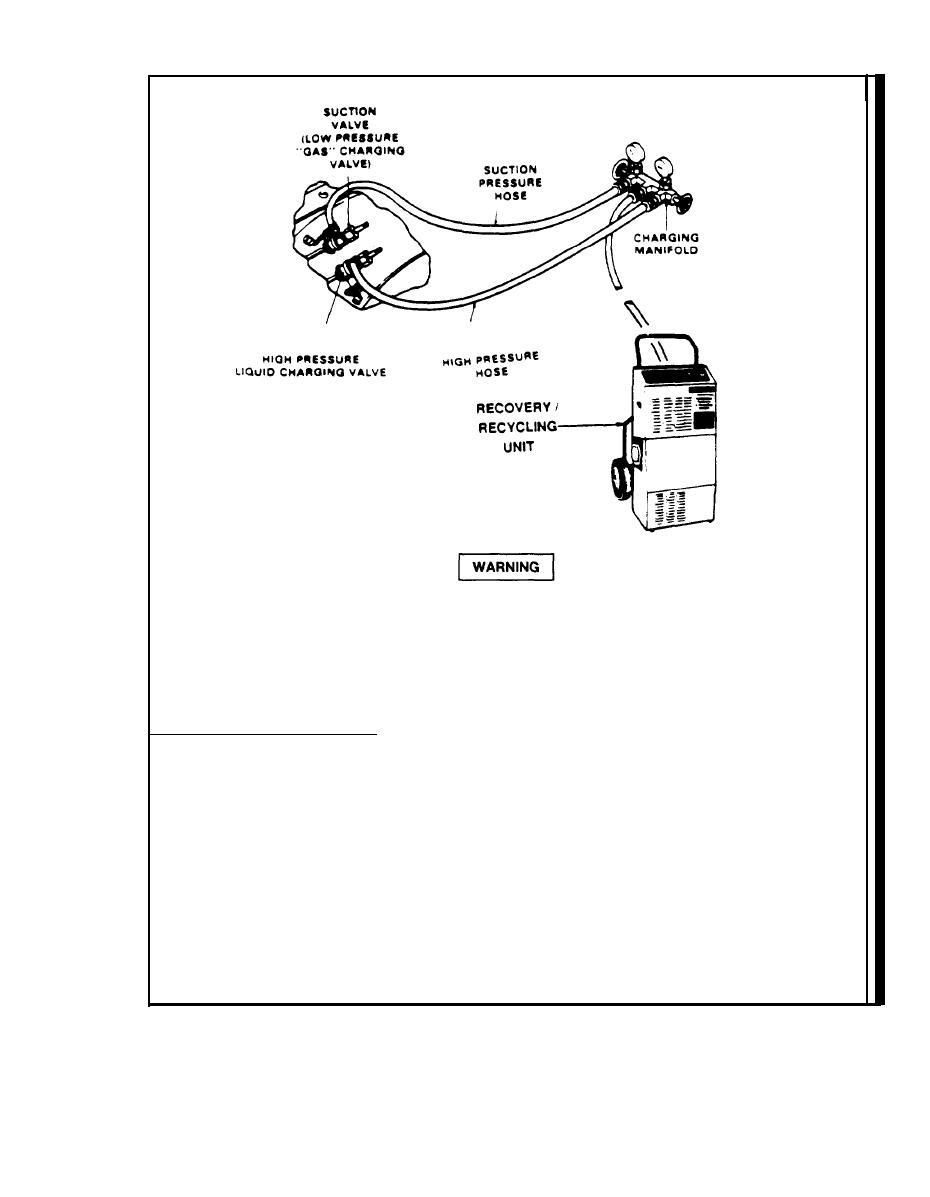 |
|||
|
|
|||
|
Page Title:
Figure 4-2. Releasing refrigerant for service. |
|
||
| ||||||||||
|
|
 TM 5-4120-356-14
Death or serious injury may result if personnel fail to observe safety precautions. use great care to
avoid contact with Iiquid refrigerant or refrigerant gas being discharged under pressure. sudden and
irreversible tissue damage can result from freezing. wear thermal protective gloves and a face
protector or goggles in any situation where skin-eye-contact is possible,
Prevent contact of refrigerant gas with flame or hot surfaces. heat causes refrigerant to break down
and form carbonyl chloride (phosgene), a highly poisonous and corrosive gas.
RELEASING REFRIGERANT FOR SERVICE
NOTE
In accordance with environmental protection agency regulations refrigerants, cannot be discharged
into the atmosphere. a refrigerant recovery & recycling unit must be used whenever discharging the
refrigerant system
1. REMOVE FRESH AIR SCREEN FROM AIR CONDITIONER. (SERVICE VALVES ARE LOCATED BEHIND FRESH AIR SCREEN.)
NOTE
Operation of the recovery/recycling unit must be by AUTHORIZED PERSONNEL ONLY.
2 CONNECT AND OPERATE A RECOVERY/RECYCLING UNIT IN ACCORDANCE WITH THE MANUFACTURER'S lNSTRUCTlONS.
Figure 4-2. Releasing refrigerant for service.
4-11
Change 4
|
|
Privacy Statement - Press Release - Copyright Information. - Contact Us |